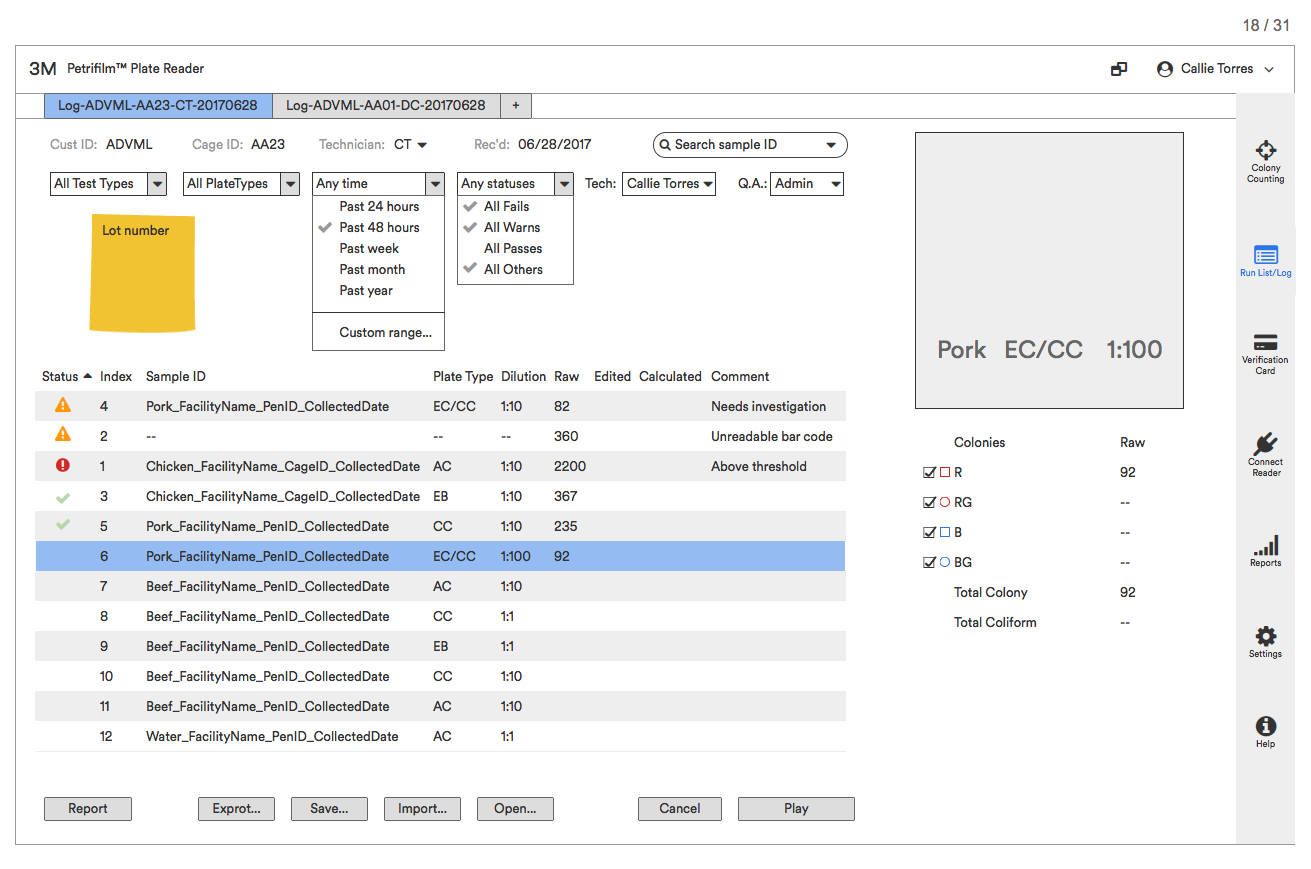I lead UX design for next-generation automatic colony counter device software, collaborating with customer account services, microbiologists, product management, marketing, computer vision and machine learning developers, mechanical, firmware, software engineers, industrial designers, and other UX designers in a phase-gate process.
Challenges
- Are we solving the right problems, in the right way, for the right customers?
- What does the current and the future landscape look like for the customers who use Petrifilm testing?
- Can we provide detailed design that supports product vision and roadmap?
New Product Introduction
It was one of the large scale new product initiatives I have worked on in my UX design career. Although there were quite a few missing deadlines (and subsequent delayed milestones), team conflicts, and technical challenges, I consider this project to be successful overall. Looking back, I attributed the success of the project to the followings:
- Specific objectives (e.g., being able to read 6 Petrifilm plates at stage 1, and 12, including a couple of new plates, at stage 2; enumeration of one plate within an average of 6 seconds with specific precision and accuracy targets; increased throughput for a lab by a large margin -- an ambitious goal that was dropped at an early stage.) The goals were set up at the initial phase and constantly adjusted as the project progressed;
- The freedom to take risks (e.g., to drop the more traditional, and faster computer vision methods in favor of, and to explore and push through with deep learning);
- Continuous iterations throughout all phases with internal and external customers to validate, verify and evolve the software and hardware mockups and detailed designs;
- A small, cross-functional team. An anecdote was that the team got a "hold" red-light in one of the phase-gates in the middle of the waterfall, and had to work hard to socialize with the key stakeholders to push through. That incident really made everyone feel we were part of the team and had to work hard to defend ourselves, including every step and direction we took.
Role of UX Design
Explore opportunity spaces and help define value propositions through qualitative and quantitative user research, competitive analysis and internal customer interviews. Elicit, analyze and conceive software requirements, and develop concepts through iterative collaborations with internal key stakeholders (including Global Tech Service and Sales Rep).
Participant experiments/Co-creation
We did serval rounds of lab experiments simulating a day in the life of lab technicians of their “integrated” Workflow (mostly on how Petrifilm results are recorded and interpreted). Each stakeholder plays a role that’s presumably to complete a distinct type of task in the workflow, such as reading, interpretation, recording, and monitoring, etc.. Excel sheets are used to dictate the workflow as well as to provide input and record results of the data at each step; this is to simulate the mental model of the target users. At each stage, we repeat the same step using our design (wireframe) in place of Excel sheets to see if we can complete the tasks, and identify the missing use cases and potential risks. This process has helped stakeholders to develop empathy for different roles in the food lab testing and become co-creators of the design solutions.
Another successful activity was a couple of participatory design workshops that engaged all key stakeholders in the conceptualization phase. We asked the participants their view of what success looked like for this MVP, what the key capabilities were, and how they would rank these capabilities in terms of priority as part of the MVP. Through the co-design workshops, team members empathizing with each other's point-of-view (it was surprising to see how differently we saw the same problem; or how strikingly close how our views actually were), and felt strong product ownership.
Stratified sampling
We wanted to make sure the sample size used for generative and evaluative studies was statistically significant. This was crucial since the product had a global market with many variations (e.g., regulatory standards, and types of customers, etc.)

























